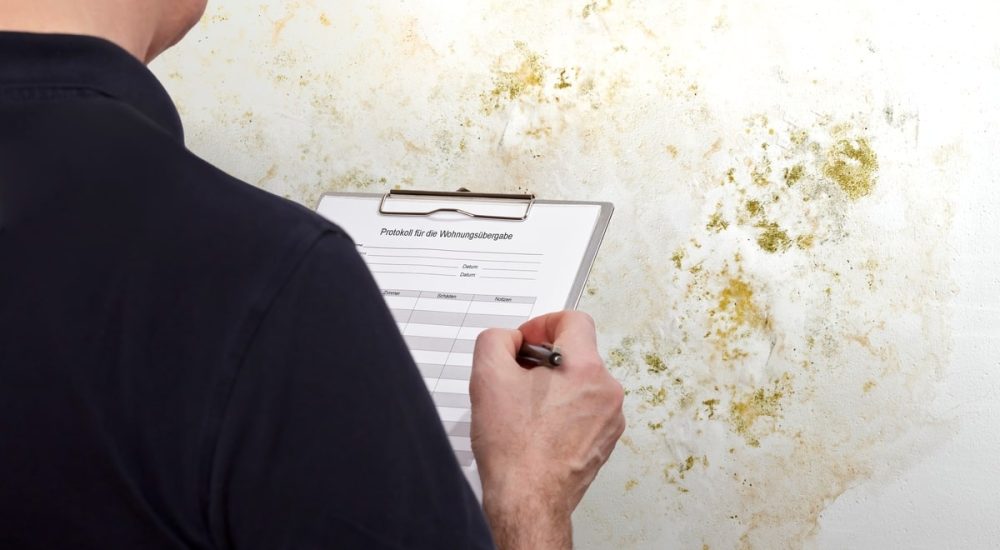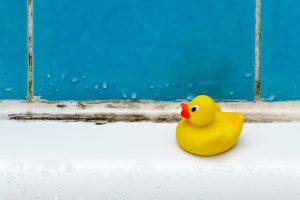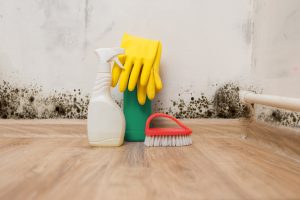
Mold Inspection And Testing: How to Spot and Address Mold Growth in Your Home
In the dark corners of our homes, a silent invader lurks, spreading its spores and weaving a web of potential health hazards. Much like a stealthy ninja, it remains unseen, yet its presence can wreak havoc on our well-being and property. Yes, we’re talking about mold, a tenacious intruder that demands our attention. This silent invader can compromise the integrity of your home and pose potential health risks to you and your family. That’s where the importance of mold inspection and testing comes into play.
Mold inspection and testing are essential tools in the battle against this stealthy foe. By identifying and addressing mold growth early, you can protect your fortress and maintain a healthy living environment. In this article, you’ll discover the importance of mold inspection and testing, learn how to spot mold growth in your home and find effective solutions to address and prevent mold issues.
Are you ready to unmask the hidden enemy and fortify your home against mold? Read on to discover the vital role of mold inspection and testing in safeguarding your living environment.
Making a Jurassic Difference
Request a reliable, professional inspection and indoor quality test.
How To Spot Mold Growth In Your Home
Mold is like a secret agent hiding in the shadows of your home, waiting to cause trouble. So, how do you catch this sneaky intruder in your home? By learning the signs and symptoms of mold growth and knowing where to look. Here’s a simple guide to help you test for mold growth in your home.
Signs And Symptoms Of Mold Growth
Mold can be a master of disguise, but it often leaves behind some clues. There are several types of mold but they share common signs. Here are a few of them:
- Musty smell: If you notice a strange, musty odor in your home, it could be a sign of mold hiding somewhere.
- Allergy symptoms: If you suddenly start to experience sneezing, coughing, or itchy eyes, mold might be the culprit.
- Visible growth: Mold can appear as black, green, or even white spots on walls, ceilings, or other surfaces.
Common Areas Where Mold Can Grow

Mold and damp, dark places. Here are some common areas in your home where mold might be hiding:
- Bathrooms: Mold thrives in humid environments, making bathrooms susceptible to mold growth. Check around the shower, bathtub, and sink for any signs of mold growth.
- Kitchens: Mold can grow near sinks, under the cabinets, and around appliances that use water, like dishwashers and refrigerators.
- Basements and crawl spaces: These areas are often damp and poorly ventilated, providing ideal breeding grounds for mold.
- Attics: Roof leaks or poor insulation can lead to mold growth in attics.
No pressure, No hassles
We’re licensed, insured, certified, and 100% focused on mold and air quality
To detect mold growth early enough, make it a habit to check the common areas where mold can grow, especially after heavy rain or flooding. If you smell a musty odor, follow your nose to find the source of the smell—it might lead you to hidden mold in the house. Water stains or discoloration on walls, ceilings, and floors can also indicate mold growth.
Catching mold early is the key to preventing it from causing problems in your home. But what if you see mold growing in your home? How do you deal with mold removal? And when should you consider a professional mold inspection and testing service? Keep reading to find out how to address mold contamination in your home and protect your fortress from this sneaky invader.
Addressing Mold Growth In Your Home
Mold growth is a common problem that many homeowners face, and it’s crucial to conduct a home inspection both inside and outside and address it promptly. Not only can mold damage your property, but it can also pose serious health risks. If you suspect mold in your house, we recommend reaching out to the experts at Jurassic Environmental Specialists, the top-notch mold inspection and remediation company.
Why Mold Inspection And Testing Is Crucial
Mold is a fungus. It thrives in damp and humid environments, which makes several spots in your home an ideal breeding ground. There are several species of mold, including the very popular black mold. Mold spreads through microscopic spores that can become airborne and easily inhaled.
Inhaling many mold spores can cause allergic reactions, breathing problems, and even infections. Moreover, mold can cause structural damage to your property, resulting in costly repairs. By addressing mold growth promptly, you can safeguard both your health and your home.
DIY Recommendations For Mold Removal

While some cases of mold growth may require professional intervention, you can tackle minor mold problems on your own. Here are some effective DIY methods for removing mold:
- Ventilate the affected area: Proper ventilation helps reduce moisture, discouraging mold growth. Open windows, use exhaust fans or consider installing a dehumidifier to maintain optimal humidity levels.
- Identify and fix the source of moisture: Mold thrives in damp environments, so it’s crucial to identify and address any underlying moisture issues. Repair leaks, improve insulation, and ensure proper drainage to prevent moisture accumulation.
- Use vinegar or hydrogen peroxide: These natural cleaning agents are effective at killing mold. Simply mix vinegar or hydrogen peroxide with water and spray the solution on the affected area. Let it sit for a while before scrubbing away the mold with a brush.
- Tea tree oil: Tea tree oil is a natural fungicide. Spraying tea tree oil, mixed with water on a moldy surface is a way to kill mold.
In some cases, however, it is better to invest in the services of professional mold inspectors.
When To Hire A Professional Mold Inspection And Remediation Service
While DIY methods can be effective for small-scale mold problems, certain situations call for professional assistance in keeping the home free of mold. Consider reaching out to a mold remediation service for the following scenarios:
- Extensive mold growth: If you find a large amount of mold, or if the mold has spread to hidden spaces, professionals have the expertise, test kits, and equipment to handle the situation safely and thoroughly.
- Health concerns: If you or your family members experience persistent allergic reactions or respiratory issues, it’s best to consult professionals to assess the mold situation and provide appropriate remediation.
- Mold in sensitive areas: Mold in areas like HVAC systems, crawl spaces, or attics requires specialized knowledge and equipment to ensure proper removal and prevention of future growth.
When it comes to professional mold remediation services, we highly recommend Jurassic Environmental Specialists. With their years of experience, highly trained technicians, and state-of-the-art equipment, they provide thorough mold inspections, precise testing, and effective remediation solutions.
The Importance Of Mold Inspection And Mold Testing
Mold growth can pose serious health risks to you and your family. Mold spores can trigger allergic reactions, respiratory issues, and even worsen existing conditions like asthma. Early detection through inspection and testing can help you address the problem promptly, ensuring a healthier living environment.
Benefits Of Mold Inspection And Testing
- Identify Hidden Mold:
Mold often thrives in hidden areas like behind walls, under carpets, or in damp basements. A professional inspection and test can uncover these hidden colonies, allowing for targeted mold remediation efforts. - Ensure Indoor Air Quality:
Conducting a mold inspection and test can help you assess the air quality in your home and you can take appropriate measures to improve it. - Prevent Structural Damage:
Mold can eat away at building materials, causing structural damage and compromising the integrity of your property. Regular inspections can help identify mold growth before it becomes a costly issue.
Preparing For A Mold Inspector
To ensure a smooth process during the inspection, here are a few things you can do:
- Document Visible Mold:
Make note of any areas where you’ve noticed visible mold growth. This information will help the inspector focus on potential problem areas. - Clear Access:
Ensure that the inspector has easy access to all areas of your home, including crawl spaces, attics, and basements. Clear away any clutter or obstructions that may hinder the inspection process. - Gather Relevant Information:
Be prepared to provide the inspector with any relevant information about past water leaks, flooding incidents, or areas prone to high humidity. These details can assist in determining potential mold sources.
What To Expect When Getting A Mold Inspection
During a professional mold detection and test, a certified mold inspector will conduct a thorough assessment of your property. This typically involves:
- Visual Inspection:
The inspector will visually examine your home, looking for signs of mold growth, water damage, and moisture issues. They may use specialized equipment like moisture meters and thermal imaging cameras to identify hidden problem areas. - Air Sampling:
To evaluate the air quality, the inspector may collect air samples from various locations in your home. These samples will be analyzed in a laboratory to determine the type and concentration of mold spores present. - Surface Sampling:
If visible mold is present, the inspector may collect samples from affected surfaces to identify the specific mold species and assess its potential impact on your health.
You may wonder what all these services could cost. Stay tuned to find out.
Factors That Could Affect The Cost Of Mold Inspection
When it comes to mold inspection and testing, several factors can impact the overall cost. The size and complexity of the property, the extent of mold growth, and the number of samples required all play a significant role. Geographical location, accessibility, and the experience and reputation of the inspection company can also influence the price tag.
The average cost of professional mold inspection can vary from $300 to $1,500, depending on these factors. A smaller property with limited mold issues may fall on the lower end of the spectrum, while larger or more complex spaces with extensive mold problems might incur higher costs.
During a professional mold inspection, a certified inspector will thoroughly examine your property, looking for visible signs of mold, assessing the moisture levels, and identifying potential sources of mold growth. They may use specialized tools such as moisture meters, thermal imaging cameras, or air quality testing devices to gain accurate insights.
Furthermore, if your home is positive for mold growth, the inspector may recommend taking samples to determine the type and concentration of mold spores present. These samples are then analyzed in a laboratory, which incurs additional costs. The results of the test will help guide the appropriate remediation actions needed to eliminate the mold problem effectively.
It’s crucial to remember the significance of hiring a reputable and experienced inspection company. Their expertise and attention to detail can save you money in the long run by ensuring the accurate identification of mold issues and providing effective solutions.
Don’t let the fear of unknown mold problems linger! Take the necessary steps to ensure a safe and healthy environment. Get your property inspected by professionals and safeguard your loved ones today!
